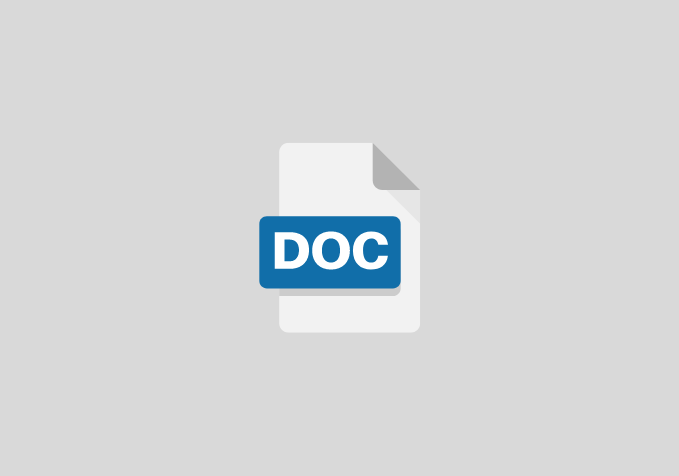Disaster Preparedness and Security Management in Archives (a Case Study of National Archives Owerri Branch)
CHAPTER ONE
AIMS AND OBJECTIVES
For any work to have a base, it must aim at something. Therefore, the researcher aims at studying the need for disaster preparedness and adequate security measures to be taken by the National Archives, Owerri Branch in other to secure and protect its collections and building from dangerous disaster.
CHAPTER TWO
LITERATURE REVIEW
Literature review is the heart and/or the backbone of any literary work. For easy understanding of this project, it is pertinent to note that the concepts to be discussed fully in this work. They include:
What are archives?
Archival disasters and damages
Disaster risk assessment
Managing the disaster risk
Financial planning
Disaster preparedness
Security management of archives
WHAT ARE ARCHIVES?
Information is a vital resource in stimulating socio-economic development. Mazoni (1999) emphasizes the important role the information plays in the world today. He notes that for a while now, that distribution of real power is based not on who owns what but who knows what. Among the various sources of information are records and archives.
According to Mazikana (1990), the uses of records and archives include; Verification of facts, compilation of reports and studies, research, policy formulation, planning and implementation, handling of legal claims, project planning and evaluation as well as administration and protection of national interest.
Thus, Archives is a word of Greek origin from which later Latin writers coined the word Archivum. The professional definition of the word Archives has however remained a matter of controversy.
The famous trio of Dutch Archivists – S. Muller(18-19220, S.A . Feith (1858-1913) and B. Fruin (1857-1935) defined the Dutch word Archief in their book published in 1898 and translated by an American Archivist, Arthur H Leavith in 1940 under the title manual for the arrangement and description of Archives as follows , Archief is the whole of the written document s, drawings and printed matter officially received or produced by an administrative body or one of its officials in so far as these documents were intended to remain in their custody of that body or of that officials.
An eminent Italian Archivist , Eugleria Cassanova (1928) defines the word as “the orderly accumulation of documents which were created in the course of its activity by an institution or an individual and which are preserved for the accomplishment of its political, legal or cultural purposes by such an institution or individual”.
CHAPTER THREE
RESEARCH METHODOLOGY
INTRODUCTION
This chapter however, is based on a measure by which the research was carried out. The study is on “Disaster preparedness and security management of National Archives, Owerri branch”, and the purpose of the research is to provide the basic information on the need for disaster preparedness, disaster control and planning and adequate security management of the collections of National Archives, Owerri branch.
Thus, the models used are presented as follows: types of data required; instrument of data collection, population of study and sample size, method of data analysis and pre-testing of instrument.
CHAPTER FOUR
DATA ANALYSIS, INTERPRETATION AND FINDINGS
This chapter is based on the analysis and interpretation of the results obtained from the questionnaires and interview administered to the entire staff and chief Archivist of National Archives, Owerri Branch respectively. The questions are broken down and answers as obtained from respondents are tabulated and done by the use of simple percentage %.
BIBLIOGRAPHY
- Alegbeleye G.B. (1985) Conservation of Bibliographic Resources of Nigeria: Problem and Prospect, “Nigerian Libraries” 21(2) 1985 p. 1-8.
- A.A. Alemna: The Management of oral records by Libraries, Archives and other Relevant Institution in Ghana, cited in “African Journal of Library Archives and Information Science” Vol. 5, No. 2.
- Amadi E.I. Lecture note (“Record and Modern Archives Management”) Library and Information Science Lecturer Federal Polytechnic Nekede Owerri 2006-2007.
- Amadi M. (1991) “Here and to day” “Journal of Library Archives, and Information Science” Vol 1, No. 1.
- Bohem, H. (1978), “Disaster Prevention and Disaster Preparedness” California University of California Press.
- Deken, J.M. (1984), “Recovering from a major Disaster”. The Midwestern Archivist.


